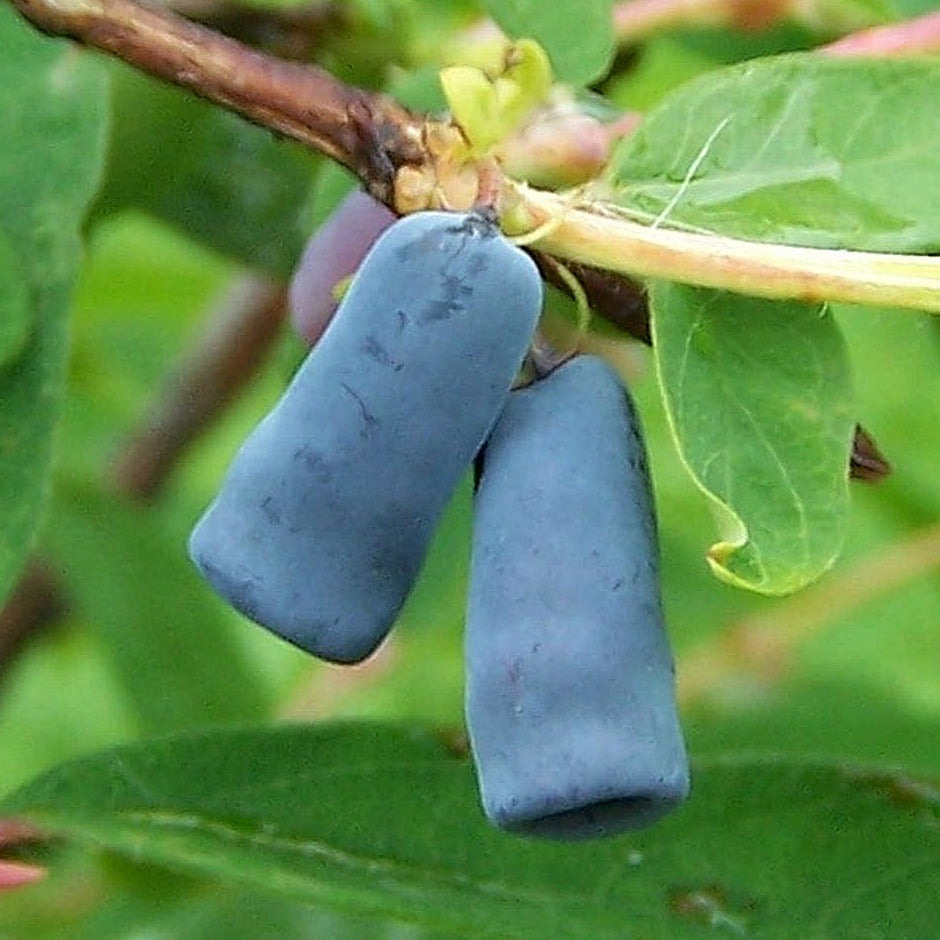The American Fig Company
Blue Forest Honeyberry
Blue Forest Honeyberry
Couldn't load pickup availability
The Blue Forest Honeyberry entices with its plump and juicy blueberries, each bite bursting with delectable sweetness and a hint of delightful tartness. Whether enjoyed fresh, baked into mouthwatering desserts, or transformed into flavorful preserves, these berries are sure to delight your culinary creations.
Versatility is at the core of this shrub, making it an excellent choice for gardeners of all skill levels. Its adaptable nature allows it to thrive in various climates and soil types, providing a rewarding gardening experience for everyone.
Not just a treat for your taste buds, the Blue Forest Honeyberry showcases an attractive display of blue-hued fruits, adding a touch of elegance to your garden. With its lush foliage and graceful growth, it makes for a stunning centerpiece in any landscape.
Adding to its appeal, these berries are a nutritional powerhouse, offering a wealth of antioxidants, vitamins, and minerals, contributing to a healthful addition to your diet.
Embrace the joy of growing your own Blue Forest Honeyberry and experience the delightful symphony of flavors it brings to your garden. Elevate your garden with its flavorful charm and ornamental allure. Start your journey to a fruitful and vibrant garden by planting the Blue Forest Honeyberry today. Don't miss this opportunity to enhance your garden with this extraordinary fruit-bearing shrub. Order now and savor the sweetness of homegrown honeyberries, creating cherished moments in your garden's journey.
Latin Name: Lonicera caerulea var. edulis
Site and Soil: prefer full sun to partial shade and well-drained soil. They can tolerate a wide range of soil types, including sandy, loamy, and clay soils, but prefer slightly acidic soils with a pH between 5.0 and 7.0.
Pollination Requirements: are self-fertile, but will produce higher yields if planted with a different cultivar for cross-pollination.
Hardiness: are hardy to USDA zone 2, withstanding temperatures as low as -50°F. They require a certain amount of winter chill to set fruit, and will not produce well in areas with mild winters.
Bearing Age: can begin bearing fruit 1-2 years after planting, but will reach full production at around 4 years.
Size at Maturity: typically grow to be 4-6 feet tall and wide, but can reach up to 8 feet with age. Pruning can help control their size and shape.
Bloom Time: produce small, white or pinkish flowers in early spring before the leaves emerge. The flowers are not showy but are important for fruit production.
Ripening Time: ripen in late June to early July, about a month before blueberries.
Yield: can produce 7-10 pounds of fruit per plant at full maturity, with higher yields when planted with a different cultivar for cross-pollination.
Pests & Diseases: are generally pest and disease resistant, but can be susceptible to fungal diseases in wet conditions. Birds may also eat the fruit, so protective netting may be necessary.
USDA Zone: 2-7. can tolerate a wide range of climates, but require a certain amount of winter chill to set fruit. In warmer areas, they may not produce well or at all.
Share

Featured Review
"Great! Great! Great! Great! Great!"
✰✰✰✰✰
- JARREN -
